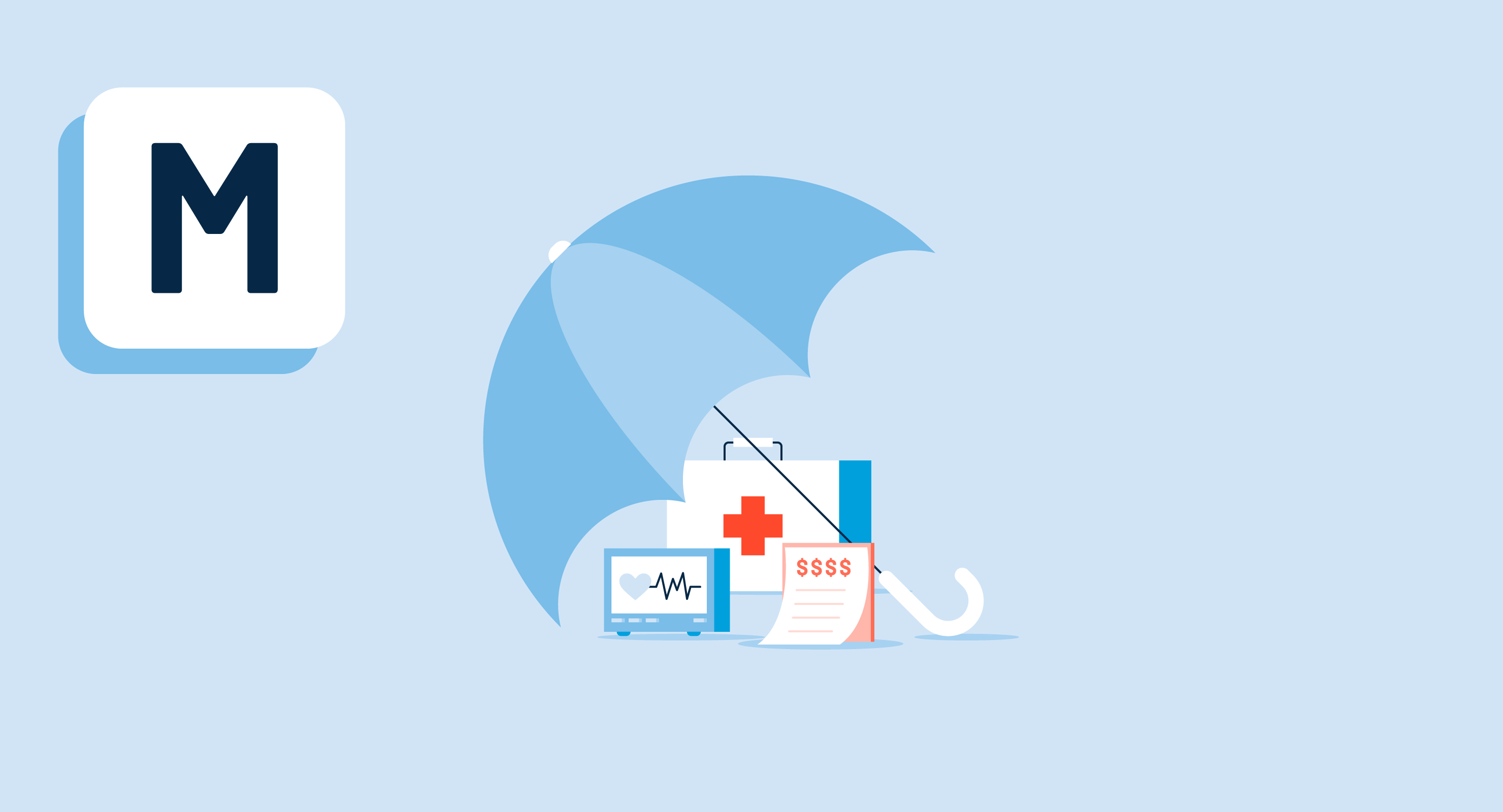What is Medicaid billing?
Medicaid billing is a payment structure in the medical billing software that combines preset base rates for specific services and supplemental rates for costs beyond base rates. The United States healthcare system uses Medicaid billing to review and settle Medicaid claims from healthcare providers. Medicaid regulations require that such payment claims for medical services, supplies, or care are made within 90 days of the date of service.
Types of Medicaid programs for billing
Managed care arrangements under the Medicaid program can be categorized into three categories:
1. Comprehensive risk contract: A comprehensive risk contract offers an enrollee the option to choose inpatient hospital services along with one or at least three of the following:- Physician
- Lab and X-ray
- Nursing facility
- Family planning
- Rural health clinic
- Outpatient hospital
- Home health services
- Federally qualified health center
- Early and periodic screening, diagnostic, and treatment (EPSDT)
States can exclude certain benefits or provide some of these services via fee-for-service (FFS) that pays for services separately or limited-benefit plans. Under this plan, the state pays a monthly capitation to the managed care organizations (MCOs) regardless of whether the beneficiaries avail the services.
2. Primary care case management (PCCM): A PCCM program assigns a designated primary care provider (PCP) to every enrollee. A PCP receives a monthly case management fee for care management and coordination. This program pays individual providers on an FFS basis. In a PCCM program, a state has the liberty to choose the types of healthcare providers as PCPs.
3. Limited-benefit plans: A limited-benefit plan provides a subset of benefits or offers services to a particular subpopulation. Such a plan can consist of prepaid ambulatory health plans (PAHPs) and prepaid inpatient health plans (PIHPs). These plans are paid on a capitated basis. Both FFS and managed care enrollees are eligible for benefits with a limited-benefit plan.
Who is eligible for Medicaid?
A Medicaid beneficiary must reside in the state in which they receive Medicaid services. Medicaid is only available to U.S. residents or lawful permanent residents. Some groups limited by age, pregnancy, or parenting status may also be eligible.
Here are the criteria an individual must meet to qualify for Medicaid benefits:
- Should be financially eligible based on the modified adjusted gross income (MAGI) methodology
- Must meet non-financial criteria such as citizenship or permanent residence status
Medicaid benefits
States are free to create Medicaid programs within general federal guidelines. This is why the type, duration, amount, and scope of services vary. Regardless, all states offer certain mandatory benefits that include physicians, inpatient, outpatient, home health, laboratory, X-ray, and other similar services. They may cover optional benefits, including case management, physical therapy, prescription drugs, and occupational therapy.
How are Medicaid bills funded?
While the United States Department of Health and Human Services (HHS) administers the Medicaid program, the Centers for Medicare & Medicaid Services (CMS) set program requirements and ensure compliance with federal guidelines. States participating in the Medicaid program are required to follow CMS’ service quality and eligibility standards.
Many states combine Medicaid programs with insurance programs for children. Some states administer Medicaid programs with the help of private health insurance companies. In this case, the Health Maintenance Organizations (HMOs) provide services instead of an agreed rate from the state Medicaid department.
Medicaid billing codes
The Current Procedural Terminology (CPT®), developed by the American Medical Association (AMA), is a set of medical codes that physicians, hospitals, and outpatient facilities use to claim payments for services and procedures performed.
These Medicaid billing codes are universal, meaning they can be easily understood by healthcare insurers, institutions, researchers, and other parties. Not only are these codes crucial for claim processing, but they also play a key role in healthcare utilization research and documentation.
Here are the Healthcare Common Procedure Coding System (HCPCS) and CPT codes for the services rendered according to the national correct doing initiative policy manual for Medicaid services.
- 96360-96379 and C8957: Hydration and therapeutic or diagnostic injections and infusions of nonchemotherapeutic drugs
- 96401-96549: Administration of chemotherapy or other complex drug or biologic agents
- 96360, 96365, 96374, 96409, and 96413: Initial service
- 96360-96368, 96374-96379, 96409-96417: Intravenous infusion, injection, or chemotherapy administration
- 96360-96379: Administration of drugs and fluids other than antineoplastic agents
- 96360-96379, 96401-96425, and 96521-96523: To be used by physicians for services rendered in physicians’ offices
- 96360-96377: For drug administration services at hospital outpatient facilities
- 96401-96425: For chemotherapy administration services at hospital outpatient facilities
- 96522: Refilling and maintaining an implantable pump or reservoir for systemic drug delivery
- 90460-90461 or 90471-90474: Administration of immunizations
- 96361, 96366: For each additional hour of intravenous hydration and intravenous infusion for therapy, prophylaxis, or diagnosis, respectively
- 90791, 90792: Diagnostic and therapeutic psychiatric services
- 95860-95872: For electromyography (EMG) performed separately for diagnosis or follow-up of organic muscle dysfunction
- 90935, 90937, 90945, 90947, G0491, and G0492: Evaluation and management (E&M) services related to dialysis procedure and renal failure
- 43753-43757 and 91000-91299: Gastroenterology procedures
- 92002-92014: General ophthalmological services
- 92230 and 92235: Fluorescein angioscopy and angiography
- 67005-67229: Posterior segment ophthalmic surgical procedures
- 92552-92557, 92561-92588, and 92597: For otorhinolaryngologic services using calibrated electronic equipment
- 92507, 92508, or 92526: Speech-language pathology
- 92950: Cardiopulmonary resuscitation without other E&M services
- 99291 and 99292: Critical care E&M services
- 99354-99357: Prolonged E&M services
- 94375: Standard spirometry (rest and exercise) studies
- 94621: Cardiopulmonary exercise testing
- 94060: Bronchodilation responsiveness, spirometry as in 94010, pre- and post-bronchodilator administration
- 95004 or 95024: Percutaneous or intracutaneous (intradermal) single test
- 95017, 95018, or 95027: Sequential and incremental tests
- 95052: Photo patch tests
- 95700-95726: Continuous electroencephalographic monitoring services other than services provided during sleep testing or polysomnography
- 95940: For continuous intraoperative neurophysiology monitoring along with one-on-one monitoring
- 95941: For remote continuous intraoperative neurophysiology monitoring
- 96116 and 96121: Neurobehavioral status exam, not applicable for mini-mental status exam
- 90791, 90792: Psychiatric diagnostic interview examination
- 96136-96146: Psychological/neuropsychological testing
- 96130-96133: Psychological/neuropsychological evaluation services
- 97165-97168: Occupational therapy evaluation/re-evaluation
- 97755: One-on-one assistive technology assessment
- 97760: Orthotic (s) management and training
- 97802-97804: Medical nutrition therapy
- 97112, 97124, and 97140: Physical medicine and rehabilitation services
- 99202-99499: Evaluation & Management (E&M) services
Place of service codes for Medicaid claims
According to the Centers for Medicare & Medicaid Services (CMS), Medicaid service providers need to specify service codes for reimbursement. These codes help institutions identify where services were rendered. Here are the place of service codes for Medicaid bill claims:
- 01: Pharmacy
- 02: Telehealth provided anywhere except the patient’s home
- 03: School
- 04: Homeless shelter
- 05: Indian health service free-standing facility
- 06: Indian health service provider-based facility
- 07: Tribal 638 free-standing facility
- 08: Tribal 638 provider-based facility
- 09: Prison/correctional facility
- 10: Telehealth provided in patient’s home
- 11: Office
- 12: Home
- 13: Assisted living facility
- 14: Group home
- 15: Mobile unit
- 16: Temporary lodging
- 17: Walk-in retail health clinic
- 18: Place of employment-worksite
- 19: Off campus-outpatient hospital
- 20: Urgent care facility
- 21: Inpatient hospital
- 22: On-campus – outpatient hospital
- 23: Emergency room – hospital
- 24: Ambulatory surgical center
- 25: Birthing center
- 26: Military treatment facility
- 27-30: Unassigned
- 31: Skilled nursing facility
- 32: Nursing facility
- 33: Custodial care facility
- 34: Hospice
- 35-40: Unassigned
- 41: Ambulance – land
- 42: Ambulance – air or water
- 43-48: Unassigned
- 49: Independent clinic
- 50: Federally qualified health center
- 51: Inpatient psychiatric facility
- 52: Psychiatric facility – partial hospitalization
- 53: Community mental health center
- 54: Intermediate care facility or individuals with intellectual disabilities
- 55: Residential substance abuse treatment facility
- 56: Psychiatric residential treatment center
- 57: Non-residential substance abuse treatment facility
- 58: Non-residential opioid treatment facility
- 59: Unassigned
- 60: Mass immunization center
- 61: Comprehensive inpatient rehabilitation facility
- 62: Comprehensive outpatient rehabilitation facility
- 63-64: Unassigned
- 65: End-stage renal disease treatment facility
- 66-70: Unassigned
- 71: Public health clinic
- 72: Rural health clinic
- 73-80: Unassigned
- 81: Independent laboratory
- 82-98: Unassigned
- 99: Other places of service
Medicaid billing guidelines
The Medicaid billing reimbursement policy requires healthcare service providers to follow certain instructions. These instructions vary from state to state but follow a standard protocol given below:
- Verify a beneficiary’s Medicaid eligibility
- Prepare a claim using the correct beneficiary Medicaid ID and Medicaid billing codes
- Submit a claim through a batch vendor or the web portal
Bill third-party carriers, when applicable - Look for paid, denied, or suspended claims on the remittance advice (RA)
- Follow state regulations for handling denied or suspended claims
Medicaid vs. Medicare
Both Medicaid and Medicare are health insurance programs sponsored by the U.S. government. They are designed to help American citizens cover healthcare and related costs. The key difference between them is that the former serves the low-income population regardless of their age, whereas the latter supports people aged 65 and over, adults with certain disabilities, and end-stage renal disease (ESRD). Children from families above the poverty threshold are not qualified for Medicaid and covered via Children's Health Insurance Program (CHIP).
Medicaid offers comprehensive health care coverage for low-income adults, pregnant women, and children. The eligibility criteria vary from state to state, but overall, Medicare includes hospital insurance, medical insurance, Medicare Advantage (MA), and prescription drug benefits.

Sudipto Paul
Sudipto Paul is a Sr. Content Marketing Specialist at G2. With over five years of experience in SaaS content marketing, he creates helpful content that sparks conversations and drives actions. At G2, he writes in-depth IT infrastructure articles on topics like application server, data center management, hyperconverged infrastructure, and vector database. Sudipto received his MBA from Liverpool John Moores University. Connect with him on LinkedIn.








